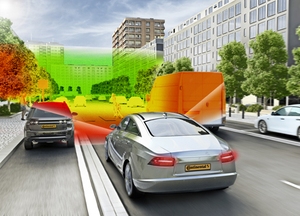Continental takes a new step towards automating driving
Apr 05, 2017
Zero road accident, comfortable driving, clean air - this is what in the near future will open before us the technology of mobility. At the same time, the main requirement for modern advanced driver assistance systems and automated driving is the ability to quickly and reliably and accurately perceive objects around the vehicle.
Today, many automakers already use Continental radar sensors, which allow timely detection of pedestrians, warn the driver and initiate automated braking in emergency situations. For example, this feature since last year has become standard for the new Volkswagen Tiguan. Nevertheless, the international company Continental continues work on automating driving and has already started creating the next generation of products for modeling the environment, which will provide a reliable overview for the vehicle.
A reliable environment model requires different information, including from other road users, static objects such as road curbs, your own exact vehicle location and changes in traffic traffic. The goal is to achieve an understanding of the situation around the car, also good or better than a person does.
The incoming data can be processed in separate sensors or a central control unit to build a high-precision model of the vehicle environment. The larger the amount of data for analysis, the more computing power is required. This, in turn, leads to the need for more powerful control units. The environment model is an intermediate program layer between individual sensors and various applications. This layer contains the data of synthesis and planning algorithms and is designed to improve accuracy and reliability. Acting as the central point of assessment and understanding of all the information received, the ADCU (Automated Driving Control Assistance Block) forms the modeling environment more than 50 times per second.
3D flash LIDAR consists of only two key components: a laser as a transmission source acting as a camera flash that illuminates the space around the car over a distance of over 200 meters, and a highly integrated receptor chip. A complete 3D model of the vehicle's external environment is built in just 1.32 microseconds, 30 times per second. The low complexity and availability for production means that you can install several sensors around the machine to create a complete picture of the environment around the vehicle (360 degrees) in real time.
3D flash LIDAR expands the portfolio of environmental sensors for advanced driver assistance systems Continental to fully automate driving. Serial production is scheduled to begin in 2020.
Continental develops and produces components and systems for automatic driving around the world - in the US, Japan, China and Europe. Engineers are involved in working on six important blocks: sensory technologies, communication cluster, machine and human dialogue, system architecture, reliability and adoption of automated driving.
